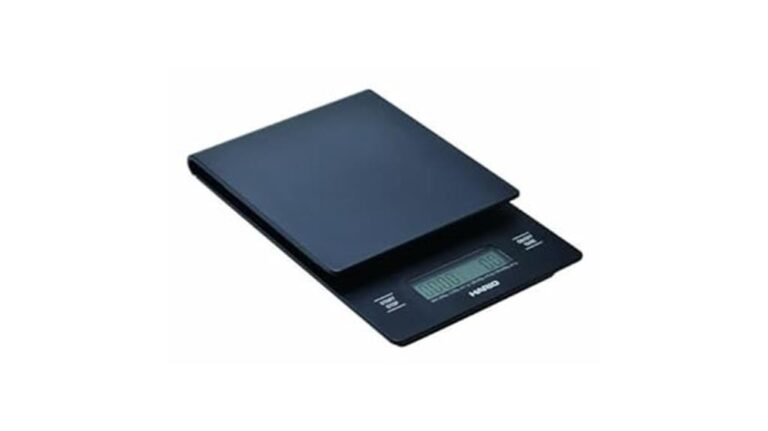How To Clean A French Press
Cleaning a French press is not just a chore; it’s a crucial step in preserving the integrity and longevity of one of your most beloved coffee-making tools. A well-maintained French press not only ensures that your morning brew is always fresh and delicious but also extends the lifespan of the press itself.
In this article, we will guide you through the essential steps of cleaning and maintaining your French press. From the materials and design of your press to the most effective cleaning techniques, we will cover everything you need to know to keep your French press in pristine condition.
Understanding Your French Press
Before learning how to clean your French Press well, it is important to understand the various components that comprise this coffee maker. Each part of the French Press is vital, and plays a significant role in brewing coffee, and filtering the brew correctly.
French Press Components
- Plunger and Lid: The plunger, equipped with a metal or plastic lid, is integral for pressing the coffee grounds to the bottom of the carafe.
- Filter and Filter Screen: These parts trap coffee grounds, ensuring they don’t end up in your cup.
- Carafe: Usually made of glass, stainless steel, or plastic, it’s where the coffee brewing takes place.
Weird Coffee Tip: A great cup of coffee requires great brewing methods. Find out how the French Press brewing method compares to other brewing methods and find the right technique for you in this article:
10 Best Comparisons: French Press Vs. Other Brewing Techniques
Materials and Cleaning Considerations
- Glass Carafes: Prone to staining and can break easily. Requires gentle, non-abrasive cleaning.
- Stainless Steel: Durable and rust-resistant but susceptible to water spots.
- Plastic Components: Can absorb coffee oils and aromas over time, necessitating thorough cleaning.
Understanding the construction and material of your French press is crucial for effective cleaning. Different materials may require specific cleaning methods to avoid damage while ensuring a thorough clean.
Daily Cleaning Routine
A good daily cleaning routine is the best way to maintain your French Press brewer and ensure that it functions well, and lasts for a long time.
Step-by-Step Guide for Daily Cleaning
- Disassemble: After brewing, carefully disassemble your French press, separating the lid, plunger, filter, and carafe.
- Rinse Thoroughly: Rinse each component under warm water to remove coffee grounds and oils.
- Soft Cleaning: Use a soft sponge or cloth with mild dish soap to clean each part, especially focusing on the filter and filter screen where grounds can accumulate.
- Rinse Again: Ensure all soap is thoroughly rinsed off to avoid any residue affecting the taste of your coffee.
- Dry Completely: Air dry or use a soft towel to dry each component before reassembling. This prevents water spots, especially on stainless steel parts.
Tips for Quick and Efficient Cleaning
- Immediate Cleaning: Clean your French press immediately after use to prevent stains and buildup.
- Warm Water: Use warm water, as it helps dissolve oils and loosens coffee grounds.
- Avoid Harsh Materials: Don’t use abrasive sponges or brushes that can scratch glass or plastic components.
Regular daily cleaning is vital to prevent the buildup of coffee oils and residues, which can affect the taste of your coffee and the cleanliness of your French press.
Deep Cleaning Process
Deep cleaning your French press is essential for maintaining its functionality and ensuring the best coffee flavor. This process helps remove coffee oils, potential mold, and any other residues that regular cleaning might miss.
Bi-Monthly Deep Cleaning Steps
- Disassemble Completely: Start by fully disassembling the French press, including separating the filter screen from the plunger.
- Soak in Warm, Soapy Water: Soak all parts in a mixture of warm water and mild dish soap for a few hours to loosen any stubborn residues.
- Scrub Gently: Use a soft-bristled brush or sponge to gently scrub each component. Pay special attention to the filter screen and plunger rod, where oils and tiny grounds often accumulate.
- Rinse Thoroughly: Rinse all parts under warm water to remove any soap residue.
- Vinegar Rinse for Tough Stains: If stains persist, prepare a solution of equal parts water and vinegar. Soak the stained parts for an hour, then rinse thoroughly.
- Air Dry Completely: Air dry all components before reassembling to avoid moisture buildup, which can lead to mold or bacterial growth.
Choosing Safe Cleaning Agents
- Mild Dish Soap: Always opt for a mild, non-abrasive dish soap.
- Vinegar: A natural descaler, vinegar is effective for removing hard water stains and coffee buildup.
- Avoid Harsh Chemicals: Steer clear of bleach or other harsh chemicals that can damage your French press or leave harmful residues.
Common French Press Cleaning Challenges

Cleaning challenges like stains, oil residues, and stuck coffee grounds can be addressed with simple, household items and techniques. Ensuring these issues are tackled regularly prevents long-term damage and maintains the quality of your French press.
Dealing with Coffee Stains and Oil Residues
- Baking Soda for Stains: For stubborn stains, use a baking soda paste (mix baking soda with a small amount of water). Apply the paste, gently scrub, and then rinse.
- Dishwasher Safe Parts: If your French press is dishwasher safe, utilize the dishwasher for a more thorough clean. Check the manufacturer’s instructions to confirm dishwasher safety.
- Oil Residues: To remove oily residues, mix a small amount of vinegar with dish soap in warm water for soaking the parts.
Solutions for Hard-To-Reach Areas and Stuck Coffee Grounds
- Small Brushes or Pipe Cleaners: Use these for cleaning narrow areas, like the plunger rod and filter edges.
- Rinsing Well: Ensure a thorough rinse after each use to prevent the build-up of grounds in crevices.
- Shaking with Water: For loose grounds stuck in the carafe, fill it with water, cover with a lid, and gently shake before rinsing.
Maintaining Your French Press
Maintaining your French press is not just about cleaning; it’s also about caring for and storing it properly. This ensures that your French press remains a reliable tool for your daily coffee ritual for years to come.
Post-Cleaning Maintenance Tips
- Reassemble Correctly: After cleaning, ensure all parts are reassembled correctly. Improper assembly can affect the press’s performance and potentially damage it.
- Regular Check-ups: Periodically check for any wear and tear, especially on the filter screen and plunger mechanism.
- Replacing Parts: Be prepared to replace parts like the filter screen or the carafe if they become too worn or damaged.
Advice on Storage and Handling
- Proper Storage: Store your French press in a dry place to avoid moisture buildup, which can lead to mold or rust.
- Handle with Care: Particularly with glass carafes, handle them carefully to avoid cracks or breaks.
- Avoiding Extreme Temperatures: Don’t expose your French press to extreme temperatures, like leaving it near a stove or in direct sunlight, to prevent material damage.
Conclusion
Cleaning and maintaining your French press is not just about hygiene; it’s an essential practice that directly impacts the quality of your coffee and the longevity of your equipment. Regular cleaning, both daily and deep, ensures that each cup of coffee is as fresh and flavorful as possible, while proper maintenance and storage protect your French press from damage and wear.
By following the simple yet effective steps outlined in this article, you can enjoy a pristine, fully functional French press, making your coffee experience consistently delightful and satisfying.
Remember, a well-cared-for French press is the cornerstone of a great coffee experience. Happy brewing!
-
Espresso Express eBook
R180,00 -
From Bean To Brew eBook
R450,00 -
Great Coffee, Made Simple
R0,00











